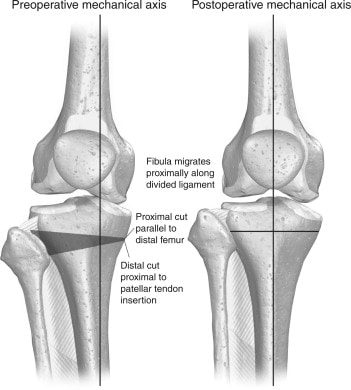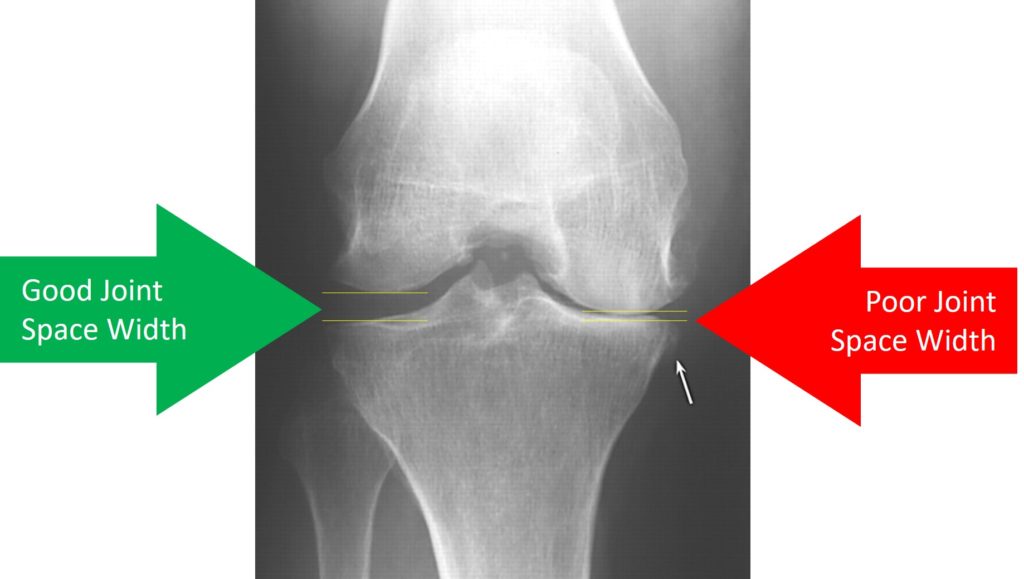Does a Knee Surgery Help Grow Cartilage? Maybe? No?
Can a knee surgery regrow your cartilage? That’s a question that seemed answered way back in 2011, but more recent research shows that those results may not have been accurate. Let’s dig in.
What is High Tibial Osteotomy?
High Tibial Osteotomy or HTO is a surgery that is usually used to fix side bent knees. A wedge of bone is removed in order to straighten the knee and the bone is affixed with a large hardware device while it all heals.
Back in 2011, a study was published that seemed to show that by getting this surgery and taking pressure off one compartment of the knee, that the damaged cartilage due to arthritis would regrow (1). This was exciting stuff, as despite this being a big surgery itself, it meant that perhaps some patients could avoid or delay knee replacement surgery.
Is An Increase in Joint Space Width Real?
Today’s study deals with a critical concept that every knee arthritis patient needs to know. This metric is called the joint space width. This is the distance between the joint surfaces. If it gets bigger, the concept is that cartilage has regrown and if it gets smaller, the idea is that cartilage is wearing away. So in the picture above, on the left, the joint space has a normal width (yellow lines) and on the right, it has poor width.
The biggest problem with this measurement is that when measured on x-rays, the doctor can only see the bones and not the cartilage. Hence, if the joint space width increases, there’s no way to tell why it got better. You can also increase or decrease the width simply by changing the angle of the x-ray beam.
This concept of a changing joint space width by manipulating the x-ray beam is what’s behind many chiropractic and alternative health stem cell clinics claiming that they regrew cartilage when they really didn’t. How does that work? If the angle of the x-ray beam goes straight down the joint, the joint space width looks bigger. If the angle of the x-ray beam is off, the joint space width looks smaller.
To find out more about how these fake stem cell clinics fake x-rays to make it look like cartilage is being regrown, watch my video below:
The New Research on HTO and Joint Space Width
So we now know that joint space width is a rather poor way to see if cartilage has regrown. Despite this, a number of studies on HTO have used this metric to claim that the surgery regrows cartilage by taking the extra-weight off of that part of the joint. However, now a new study shows that this is unlikely to be true. Let’s dig in.
The researchers looked at 114 patients who had HTO surgery (2). They also noticed an increase in joint space width after the procedure. However, they ultimately concluded that the idea that this was from cartilage regrowth was false. In fact, it was merely from the surgery realigning or straightening the knee.
The upshot? Joint space width is a really bad way to measure cartilage regeneration. In addition, it looks like the HTO surgery that many doctors thought regenerated cartilage really doesn’t accomplish that goal.
____________________
References:
(1) Parker DA, Beatty KT, Giuffre B, Scholes CJ, Coolican MR. Articular cartilage changes in patients with osteoarthritis after osteotomy. Am J Sports Med. 2011 May;39(5):1039-45. doi: 10.1177/0363546510392702. Epub 2011 Feb 1. PMID: 21285442.
(2) Moon H, et al. An Increase in Medial Joint Space Width after Medial Open-Wedge High Tibial Osteotomy Is Associated with an Increase in Postoperative Weight-Bearing Line Ratio rather than with cartilage regeneration: Comparative Analysis of Patients Underwent Second-look Arthroscopic Assessment. Arthroscopy. October, 2020. DOI:https://doi.org/10.1016/j.arthro.2020.09.042

If you have questions or comments about this blog post, please email us at [email protected]
NOTE: This blog post provides general information to help the reader better understand regenerative medicine, musculoskeletal health, and related subjects. All content provided in this blog, website, or any linked materials, including text, graphics, images, patient profiles, outcomes, and information, are not intended and should not be considered or used as a substitute for medical advice, diagnosis, or treatment. Please always consult with a professional and certified healthcare provider to discuss if a treatment is right for you.


